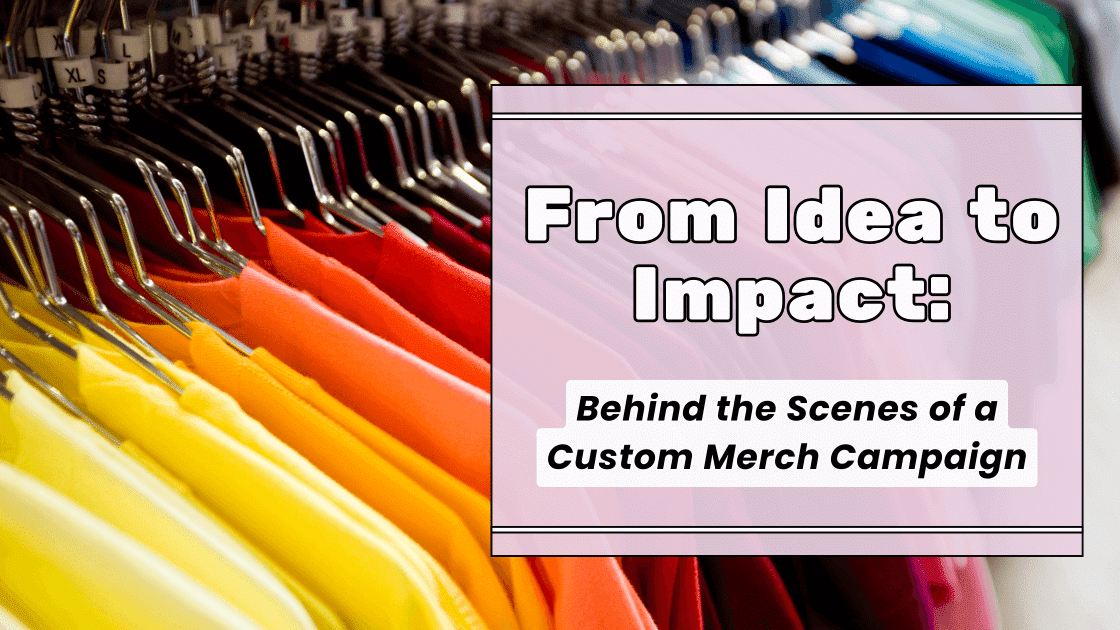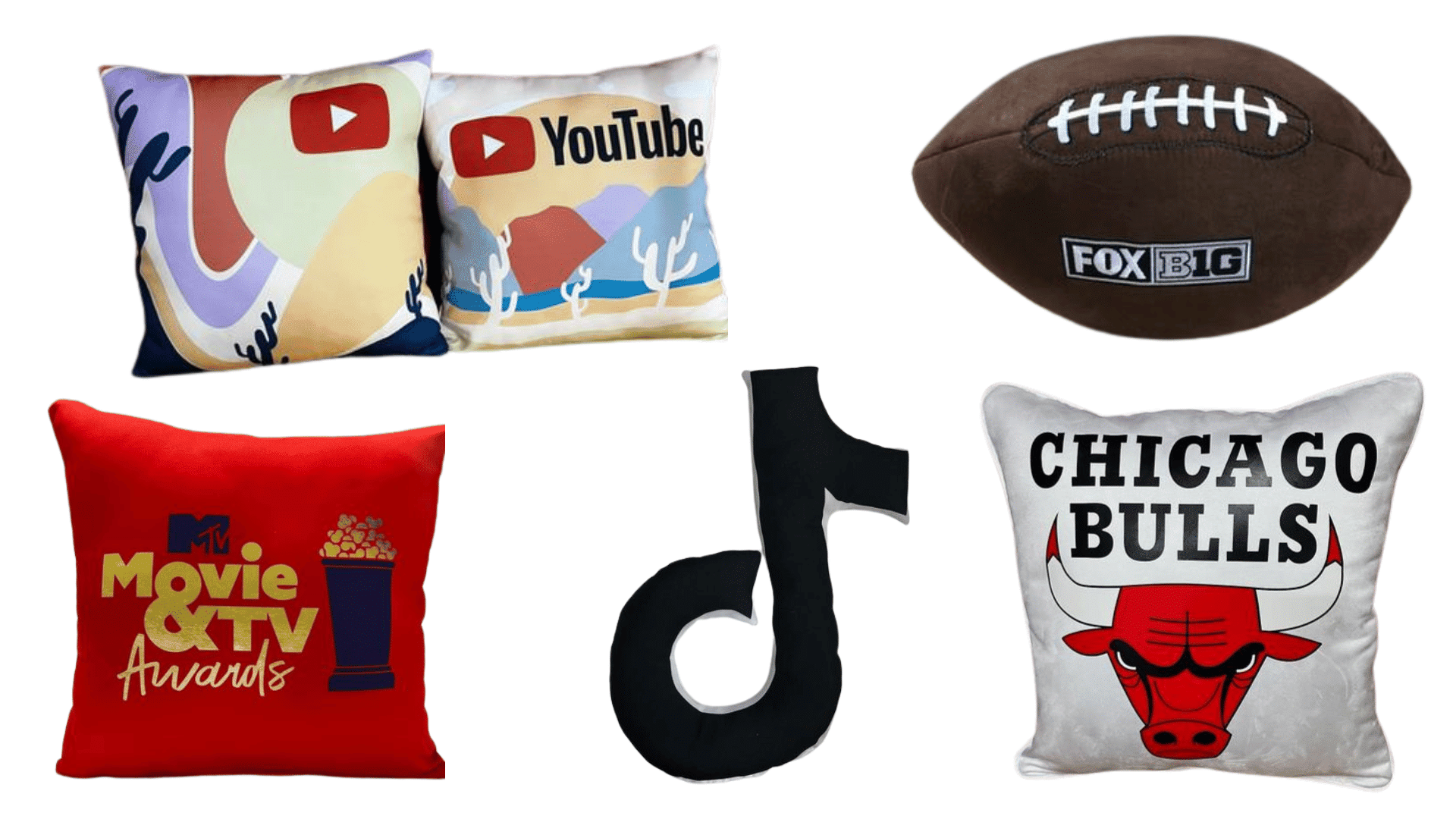In a world where everyone is scrolling nonstop, you need something tangible to cut through the noise. That is where custom merch comes in.
Recent consumer studies show that a huge majority of people actually use the branded items they receive, and many say those items make them more likely to choose that brand again. Custom merchandise turns your logo into a daily touchpoint, not just a moment in a feed.
When you treat merch like a mini-campaign instead of an afterthought, it can shift how people see, feel, and talk about your brand.
Understanding the Power of Custom Merch Campaigns
A good merch piece is not “just a T-shirt” or “just a tumbler.” It is a little ambassador that travels into your audience’s real life. Think about it. The hoodie someone wears on their flight home, the notebook that sits on their desk for months, the tote bag that shows up in their grocery runs. Each use is another brand impression that feels organic, not forced.
Custom merch campaigns work best when they are tied to a specific goal, not just a vague idea of “brand awareness.” You might want to:
- Launch a new product or service
- Celebrate a major company milestone
- Welcome VIP guests or speakers at an event
- Reward your internal team and build culture
- Surprise top clients with something elevated and unexpected
Pro tip: Before you even think about products, write one sentence that answers this question: “What do we want people to feel and do after they receive this merch?” That sentence becomes your North Star for every decision that follows.
In short, merch becomes powerful when it is treated as a strategic extension of your brand story, not leftover swag.
Sparking the Vision: How to Develop a Unique Merch Idea
This is the fun part. You have a goal, now you need an idea that feels original and true to your brand. Start by getting extremely clear on your audience and context.
Ask yourself:
- Who is receiving this merch, really? (Job, lifestyle, aesthetic, values)
- Where will they use it? (Office, gym, airport, home, commute)
- What do they already have too much of? (Generic tees, cheap pens)
- What would make them say, “Oh wait, this is cool”?
From there, build a quick mood board. Pull colors from your brand palette, photos from past events, and inspiration from streetwear, tech accessories, or lifestyle brands your audience already loves. This is where we spend a lot of time with clients. We are not just picking products. We are curating a vibe.
Some directions that tend to land:
- Elevated basics: Thoughtful hoodies, structured caps, premium totes
- Desk essentials with a twist: Metal pens, soft-touch notebooks, minimal desk organizers
- On-the-go items: Travel-friendly drinkware, packing cubes, tech organizers
- Event-specific keepsakes: Pillows, custom napkins, or print pieces tied to the theme
Pro tip: Limit yourself to a tight concept and two or three core product types. When everything comes from the same design story, it feels intentional and luxe, not random and thrown together.
The right idea should make your team excited to receive the pieces themselves. If you would not wear it, use it, or post it, keep refining.
Design & Production: Bringing Your Merch Vision to Life
Once the concept is locked in, it is time to translate that vision into real products. This is where a lot of campaigns lose steam, because the details really matter.
Key design and production considerations:
- Artwork and placements: Decide which elements of your branding should lead. Sometimes a full logo makes sense. Other times, a subtle icon or tagline on the sleeve, hem, or zipper pull feels more elevated.
- Color strategy: Work with your brand colors, but think about how they live in real life. Neutrals plus a bold accent often age better than all-over bright tones.
- Decoration methods: Screen printing, embroidery, patches, debossing, and laser engraving all create different textures, price points, and perceived value.
- Material quality: Fabric weight, feel, and durability are huge. A soft hoodie or sturdy tote gets kept. A stiff or flimsy item ends up in a drawer.
- Lead times: Premium production takes planning. Build in time for sampling, revisions, and shipping so you are not forced into last-minute compromises.
At JNP, we like to start with a sample round where we test how designs look on the actual product, not just in a mockup. This is where we refine scale, placement, and finishes so the final piece looks and feels intentional.
Pro tip: Always order a small overage of your most popular sizes or items. There will be last-minute VIPs, new hires, or surprise opportunities where having extra on hand makes your brand look prepared and generous.
Well-managed design and production keeps your campaign from feeling rushed and helps your merch land in that sweet spot of trendy, polished, and on-brand.
The Logistics: Planning and Executing a Successful Launch
You can have the best merch in the world, but if the logistics fall apart, the experience will too. This is where a lot of brands realize they need a true merchandising partner, not just a printer.
Think through:
- Quantities and sizing: Use event registrations, past data, and your audience profile to estimate size runs and order quantities. Overordering is expensive, but underordering is awkward.
- Storage and fulfillment: Will items be handed out at check-in, placed on seats, or shipped to individual addresses? Each option needs a different packing and labeling strategy.
- Unboxing and presentation: Branded tissue, custom boxes, and thoughtful packing can turn a simple item into a premium experience.
- Shipping timelines and contingencies: Build a buffer for delays. Aim to have merch arrive early so your team can stage and quality-check everything.
If you are planning events that move from city to city, logistics become even more important. You may be coordinating shipments to hotels, venues, or conference centers with tight turnaround windows. When your next conference takes you to Florida, explore our Miami merchandising for event planners to create an unforgettable guest experience.
Pro tip: Assign one “merch captain” on your team who owns all communication related to quantities, shipping, and on-site distribution. Clear ownership keeps things from getting lost between departments and vendors.
When the logistics are handled smoothly, your merch feels seamless and effortless for guests, which is exactly how it should be.
Telling Your Story: Marketing and Promoting Your Custom Merch Campaign
Merch should not exist in a vacuum. It should be woven into your marketing narrative before, during, and after the launch.
Before the campaign goes live, tease the experience:
- Share behind-the-scenes design snippets on social media
- Show fabric swatches, embroidery close-ups, or packaging previews
- Let VIPs or internal team members model early samples
During your event or drop, make the merch part of the story:
- Create a branded photo moment that makes people want to take and share pictures
- Encourage guests to style or use the merch in creative ways and tag your brand
- Highlight limited-edition or city-specific pieces to increase perceived exclusivity
Afterward, keep the momentum going:
- Repost user-generated content featuring your merch in the wild
- Highlight your favorite looks or setups from the campaign
- Use email follow-up to tie the experience back to your broader brand message
Pro tip: Build a simple hashtag or campaign tagline into your design and marketing materials. It gives people an easy way to join the conversation and makes your content easier to find and reshare.
When your merch is aligned with your storytelling, it stops being just “stuff” and becomes part of how people remember your brand.
The Impact: Measuring Results and Gathering Feedback Post-Campaign
A strong merch campaign is not over when the last hoodie is handed out. You want to know what worked, what did not, and what you should double down on next time.
Ways to measure impact:
- Engagement metrics: Track social posts, tags, and mentions that feature your merch. Look at reach, saves, and shares.
- Redemption and sign-ups: Pair merch with QR codes or short links that lead to exclusive content, special offers, or early access lists.
- Survey feedback: Send short, targeted surveys asking people how they feel about the items they received and how often they use them.
- Internal feedback: Ask your own team which pieces they are still wearing or using. Your staff are often your best test group.
You can also watch for softer signs of success. Are your items showing up in client calls, office photos, or partner content long after the event is over? Are people asking where they can get more?
Pro tip: Keep a quick “Merch Playbook” document where you log which items performed best, which vendors delivered strongly, and what you would adjust. Over time, this becomes your blueprint for smarter and more impactful campaigns.
The more you track and listen, the easier it becomes to justify merch budgets and pitch next-level ideas with confidence.
Turning Your Creative Ideas into Lasting Impact with Custom Merchandise
A custom merch campaign is more than a box of branded items. It is a full journey, from that first spark of an idea to the moment someone pulls your hoodie on for a late-night flight or sips coffee from your mug in their Monday meeting. When you treat each step with intention, you create pieces that feel like part of your audience’s lifestyle, not clutter.
At JNP Merchandising, this is literally what we live for. We are here to help you brainstorm concepts, design products that feel fresh, manage all the behind-the-scenes logistics, and turn your ideas into a merch experience that actually moves the needle. If you are ready to turn your next campaign into something people will talk about, wear, and remember, this is your sign to start building your custom merch journey today.





